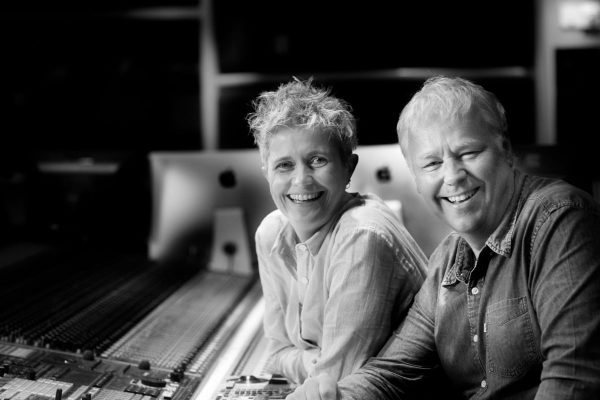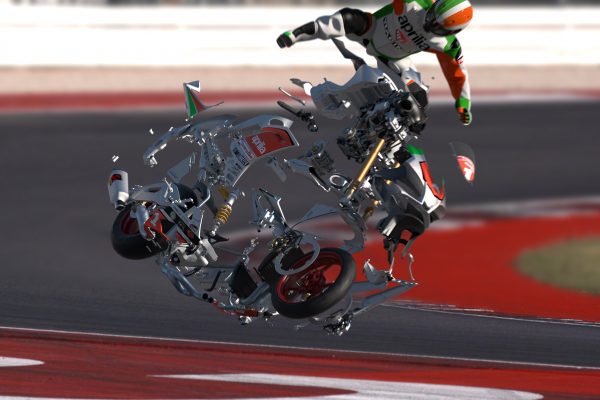By: Jen Temm
Torching the set for the final camera pass was a cathartic end to the nine-month gestation for Gotye’s head spinning Easy Way Out video, says director, animator and sculptor Darcy Prendergast.
“The studio stank but it was amazing,” he says laughing. “That was the most fun.”
The video depicts the round-and-round grind of an office worker’s life, with the repetition emphasised by the rotation of the camera turning with the day as Gotye’s Wally De Backer falls further behind his routine and his surrounds slowly deteriorate.
Ironically, a lot of the production reflected a similar tedium. With Wally’s escalating commitments following the success of Somebody That I Used To Know, Prendergast’s team from Melbourne production house Oh Yeah Wow knew they were in for a lengthy production and were determined to make “the most amazing thing we could possibly make”.
“We knew we had a long time to get it right and this was a really good opportunity to put us on the map,” Prendergast says. “We’d already started making it well before [Natasha Pincus’s] clip was released but it kind of piggybacked the success of that to a certain degree. It was one of those clips where we invested absolutely everything we had.”
With a background as a sculptor and animator – he’d previously produced the animation for Gotye’s Eyes Wide Open clip – he was determined to place De Backer in a stop motion landscape.
LEARNING ON THE JOB
“He’s great on camera and I think the world was keen to see more of him as well,” he says. “I was also very intrigued by live action filmmaking and up until that point I hadn’t really done a whole bunch of it. We basically had a very expedited film school – we had no idea what we were doing so it was ‘fake it until you make it’, really.”
Prendergast listened to the song on loop hundreds of times “until it percolated to my core – sometimes that’s what’s needed to bash out a concept. For me, narrative and concept are key – I feel that without them it’s got no soul, and people won’t watch and share it.” He drew visual inspiration from Tango (1980), an animation from Polish director Zbigniew Rybczyński, sending the film to Wally as well.
It’s the intricate detail in Easy Way Out that gives it such appeal – there’s simply no way to pick it all up without multiple viewings: the cockroaches crawling across the wall, the painstaking plasticine coffee splashes and the gradual deterioration of the set. Every single frame was finessed, Prendergast says – De Backer pouring the coffee took hours to animate but you barely see it.
NO FAKE, ALL TAKE
From the outset Prendergast insisted the elements be created in-camera – plasticine blood, the cat, the flames, the smoke – then composited together by VFX wizard Andrew Goldsmith (note his feelings about CG expressed in the last train scene’s graffiti). Very little was faked; the team didn’t have the time or budget for complex rigs and wires so the on-set animators had to be painted out of frames which meant losing shadows and other environmental effects that then had to be digitally reproduced, but the CG is subtle and unnoticeable.
“The really tricky bit was amalgamating the live action components with the stop motion components, because obviously they couldn’t be shot at the same time. So what we had to do was build a motion control rig that enabled you to shoot both live action and also frame by frame, then we had to match the image size in post because there’s a pretty distinct difference between the quality of a still photograph and a moving image from the same camera.
“We had a lot of teething issues just trying to work out how we were going to accomplish this thing and on top of that we were working out how many frames were in a full revolution – we just had to burn through that aspect of it all first which was not the fun part, it was really, really painful.”
The worst was working out the maths of seamlessly fusing the 25 per cent speed live action passes of De Backer (later sped up, giving his movements that jerky, animated quality), captured by the camera spinning 360° every 30 seconds, with the frame-by-frame stop motion elements captured in individual passes.
“The whole project was a big headache for us really,” he says. “A pleasant one, but it was a real learning curve. We’d never done anything on this scale before.”
BUILDING SKILLS
Lacking the budget for actual builders, the team even put together the circular five-room set (with considerable help from YouTube), building the framework, plaster boarding and tiling.
“It was like building a small house within the studio and until that point we’d only made miniature sets,” Prendergast says. “A builder could have built that set in a few days to be honest but we were a month in the build – we just didn’t know what we were doing. I’ve got a newfound respect for tilers because that was an absolute pain.” And then there was scouting all the bits to fill the space, including more than 10,000 sheets of paper for the office, Prendergast’s childhood bed the team took naps in, the toilet – mysteriously sourced from a friend’s tree – and the re-purposed studio fridge, painted grey to fit the colour palette.
For the live action filing, De Backer was only available for a total of four days due to his hectic touring and promotion schedule, so each scene was shot as a standalone.
“Each room was one take so we could just focus on bite-sized grabs,” Prendergast explains. “The camera would go past the room and that was all we had to do, so that’d be like 20 seconds and we’d give direction if we needed to change anything but he’s a natural to be honest, he’s a wonderful performer.”
SCULPTING A CAREER
For Prendergast, a humdrum daily grind isn’t something he’s ever likely to experience. The 28-year-old says he had always loved sculpting and illustration and had a “burning desire” to learn claymation after seeing Wallace & Gromit. He undertook a Bachelor of Animation at RMIT, lecturing there until last year as well, and got his first break making the little chocolate landscapes for Cadbury’s ‘Wouldn’t It Be Nice’ commercial before landing a job at ABC Kids making clay animations. At the time, his student film Ron The Zookeeper was selected for the French animation festival Annecy, and from there he was hired as lead sculptor on Mary and Max, a claymation feature film from Adam Elliott, director of the Academy Award winning short animation Harvie Krumpet.
The success of <Easy Way Out> – currently at more than seven million views on YouTube – and more recently with work such as The Paper Kites mesmerising Young clip, which gathers 4000 portraits of more than 350 people in a stop motion that went viral on its release and was nominated Australian Video of the Year, Prendergast says the Oh Yeah Wow team has “had offers like you wouldn’t believe”.
“We’ve definitely carved out a pretty decent niche for ourselves but the time has come to start moving into stories that are our own, and building towards feature film and TV show aspirations that we have,” he says.
“You’re never going to make money making music videos. I scrape by – and I really do mean scrape. But I would recommend to students or young filmmakers that you do it, absolutely. It’s a great way to build your portfolio – you have to create work in order to get work.
“But if you’re going to do it, put everything that you have into it. You can just stick a camera in front of a band, get it done and walk away with your cash but you might never get employed again – it’s no good creating something that’s just okay, it has to be mind blowing. It has to get out into the world and be noticed.”
Watch the Easy Way Out clip below.




